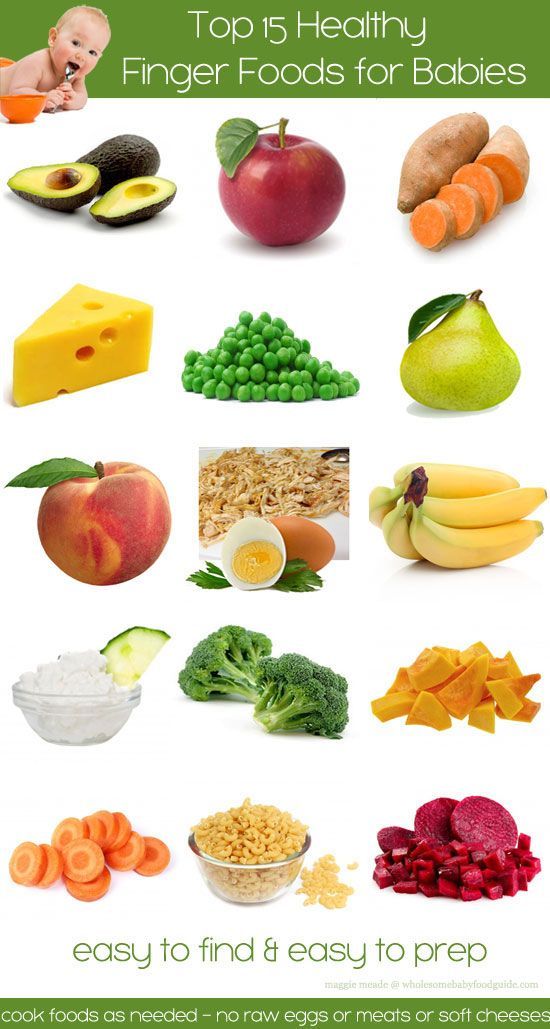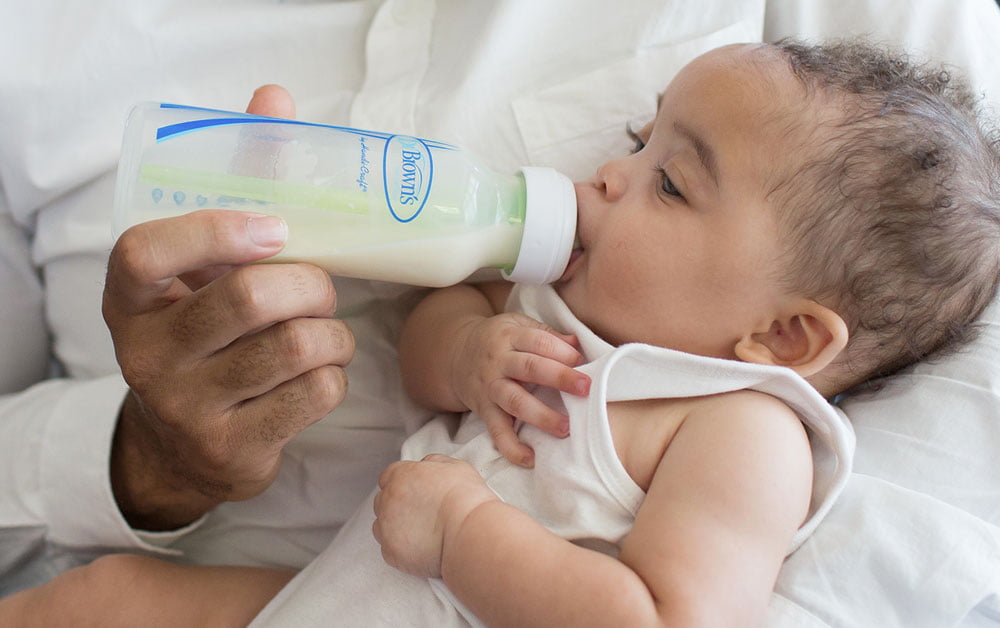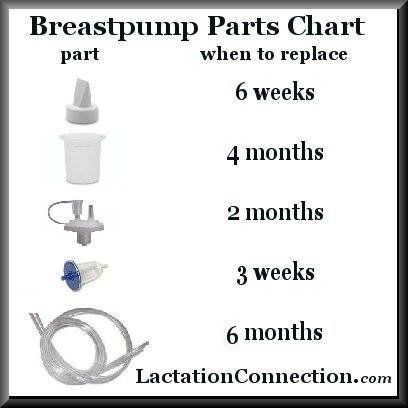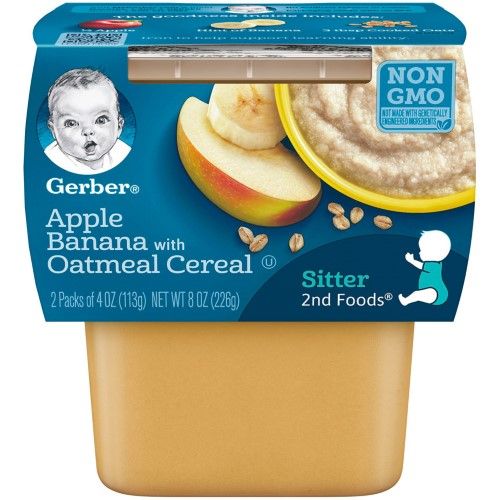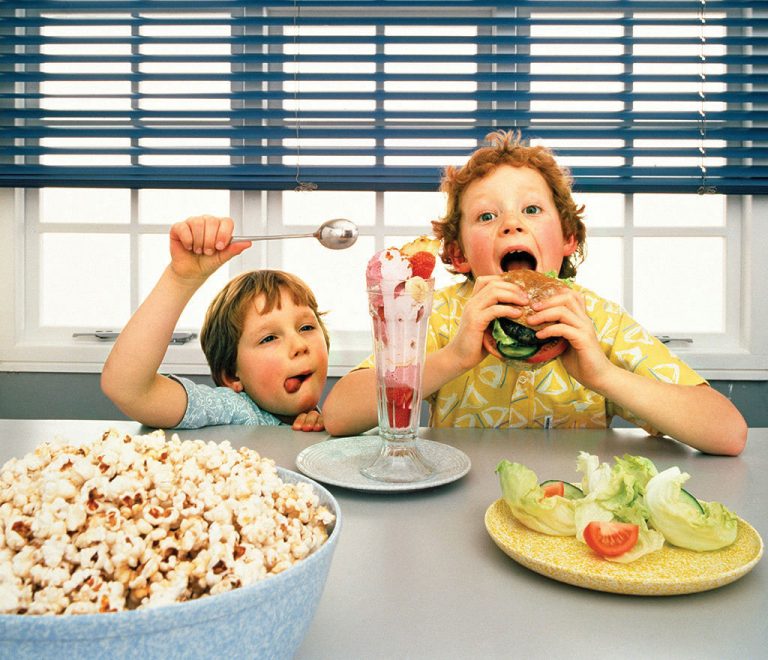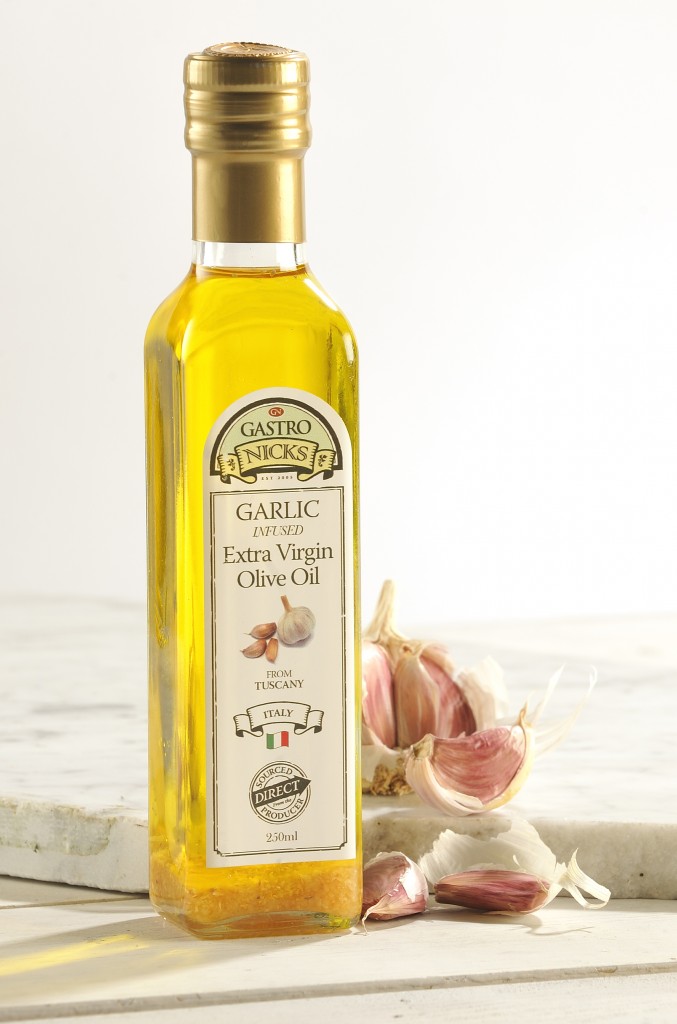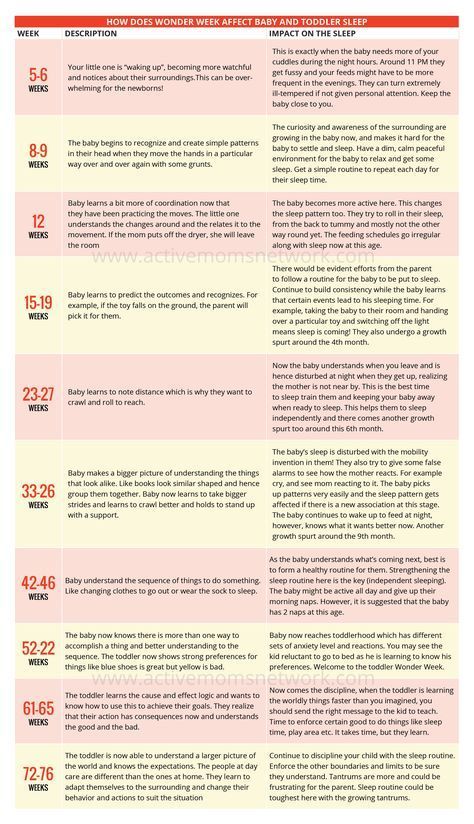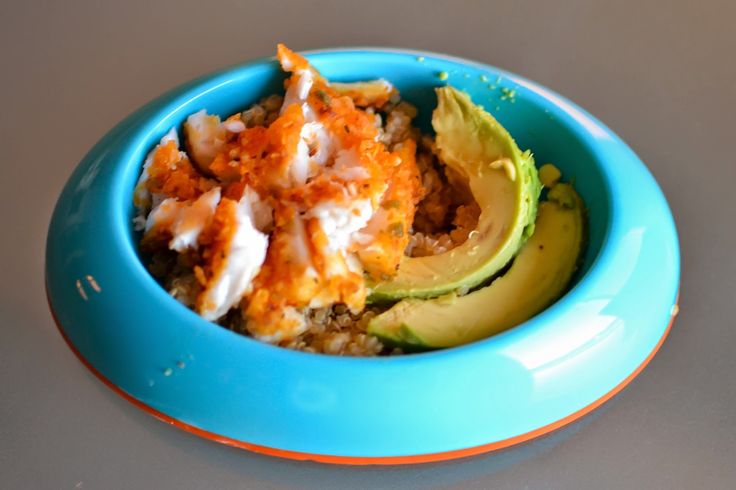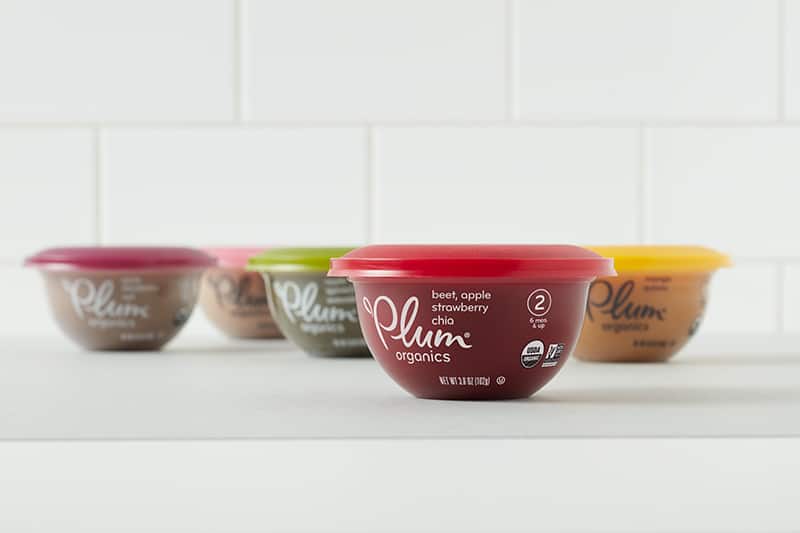Baby food for eight month old
Top Foods for 8 Month Old Baby
Here's everything you need to know to feed your 8 to 9 month old baby, including how much milk and solid food to offer as well as best foods.
There are three methods of starting solids. You may have exclusively served purees, chosen to do finger foods baby led weaning style, or taken the combination approach.
Regardless of which feeding method you chose, by 8 months, 9 months at the latest, your baby's meals should look like what I'm about to share.
So let's dive in!
Jump to:- Frequently Asked Questions
- Feeding Schedule
- How to build a well-balanced plate
- Real Life Examples
- Tips for Graduating from Purees
- Best Baby Foods for 8-9 Months
- Tips for Helping your Baby Eat
- What Foods to Avoid
- Favorite Feeding Tools
- Additional Resource
Frequently Asked Questions
How many meals should an 8 month old baby eat?
By eight months, your baby should be eating at least two meals a day. Some suggest three meals at this age, but again, every baby is different! There’s no need to force your baby to eat 3 meals a day when they’re simply not interested or hungry for it.
Two meals are plenty! You will also save yourself a lot of frustration by following your baby’s cues.
Some even suggest serving three meals and a snack. I want to reassure you that your baby does NOT need a snack until closer to 1 year of age. And even then, your baby may not be interested. Did I just hear a sigh of relief?
What’s more important than making sure your baby gets x amount of food is you creating a positive and relaxing mealtime experience for your baby.
If you are frantically trying to get food on the table and not able to enjoy sharing a meal alongside your baby, they will absolutely sense that, which can negatively affect their ability to eat.
Both of my babies weren’t ready for 3 meals until around 9 months, my son even later because he was born prematurely. But they did great with those 2 meals. And I enjoyed not having to prepare yet another meal for a little while longer ;).
And I enjoyed not having to prepare yet another meal for a little while longer ;).
I encourage you to always have your baby join you at the table so you will know when they’re ready for that last meal. If they start smacking and reaching for your food, they’re most likely ready.
I know that was a long answer, but to state simply, your baby should be eating at least 2 meals a day, working towards 3 meals by 9-10 months.
How much milk does a 8 to 9 month old need?
Milk, whether it's breast milk or formula, is and will continue to be the most important part of your child's diet up until they turn one.
At this age, daily milk intake should be around 25-32 ounces and if you are nursing, about 4-6 times a day. But keep in mind, every baby is unique. The best thing you can do is use these recommendations as a guide, but follow your baby's lead first and foremost.
It becomes a bit more challenging to do so when giving milk in a bottle because you can see exactly how much your baby drinks.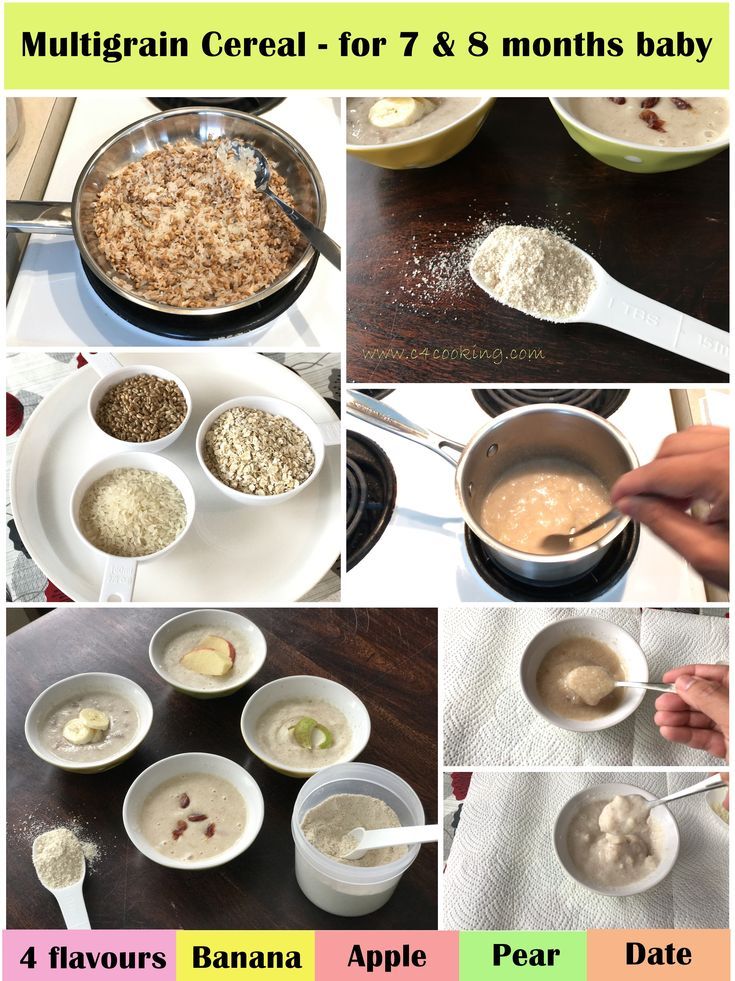 It's so easy to get caught up with the numbers. If your baby is turning away, don't force them to finish the bottle.
It's so easy to get caught up with the numbers. If your baby is turning away, don't force them to finish the bottle.
Trust their innate ability to self-regulate. Just like how you eat different amounts of food each day, it's NORMAL for your baby to drink different amounts at each feeding.
Your baby may start to drink less as they begin eating more solid food, and that's to be expected. Weaning is a gradual process. Continue to offer milk before meals and stay in tune with your baby's cues.
How much solid food should an 8 to 9 month old eat?
The American Academy of Pediatrics recommends that your baby consume between 750 and 900 calories each day, of which about 400-500 should come from breastmilk or formula.
Now I don’t know about you, but as someone who struggled with an eating disorder for a long time, I don’t want to count calories, not even for my baby. Also, it totally goes against the baby led approach, which is to TRUST and follow your baby’s innate ability to self regulate.
Just because you offer x amount of food, doesn’t mean your baby is going to eat it all. And neither should you force them to clean their plate. At this stage, it's still about discovery and learning about what food feels, smells, and tastes like.
Helping them develop a healthy relationship with food starts now! And our feeding practices matter. A LOT. What's even more important than the food you serve and how much gets eaten is a positive mealtime experience. Help your child stay positive and curious.
So the main takeaway is to prioritize milk feedings and consistently offer well-balanced meals that will help meet their nutritional needs. More on this below!
If your baby is growing, following their unique growth curve, and happy, they are eating the amount of food that’s RIGHT for them, even if it’s less or more than the recommendations or what you think they need to be eating.
Does an 8 month old baby need water?
While water may be introduced to 6 month olds and older, it is not necessary.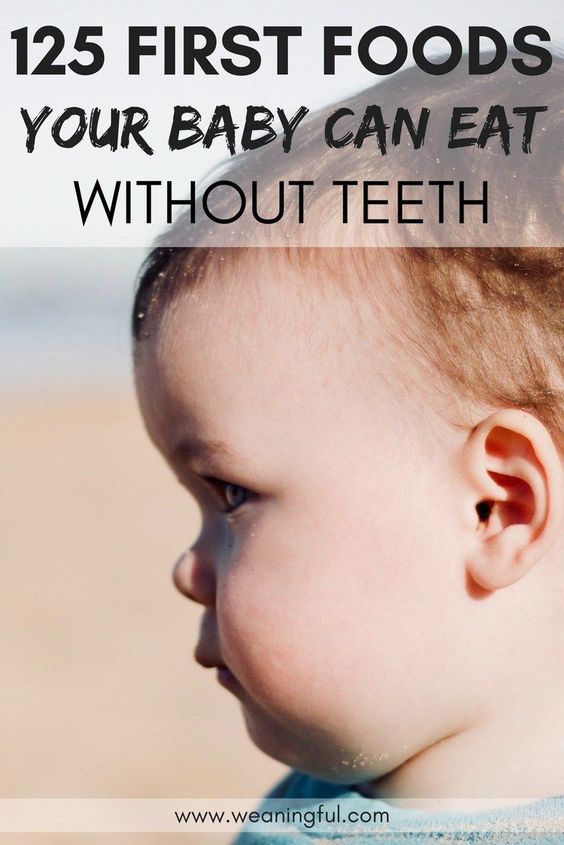 Breastmilk or formula will be enough to meet their hydration needs. As long as your baby is having regular wet diapers, there's no need to worry.
Breastmilk or formula will be enough to meet their hydration needs. As long as your baby is having regular wet diapers, there's no need to worry.
However, you may want to offer sips of water (no more than 2-3 ounces/day so it doesn't displace milk) to help them practice cup drinking and to get used to the flavor of water.
Drinking from a cup is a lifelong skill, and by introducing early, it will give them plenty of time to explore and practice. Yes, it’s going to be messy but will be well worth it when it comes time to transition your baby from the breast or bottle.
By then your baby will have the skills to drink independently and will easily be able to make the shift.
Keep in mind the goal at this stage is not to get them to drink a large amount of water. It is practice practice!
Feeding Schedule
I want to start off by saying that having a schedule doesn't mean you have to be super rigid with it. There's always room for flexibility.
Babies thrive on predictability and routine, and it can also help you to plan your day accordingly.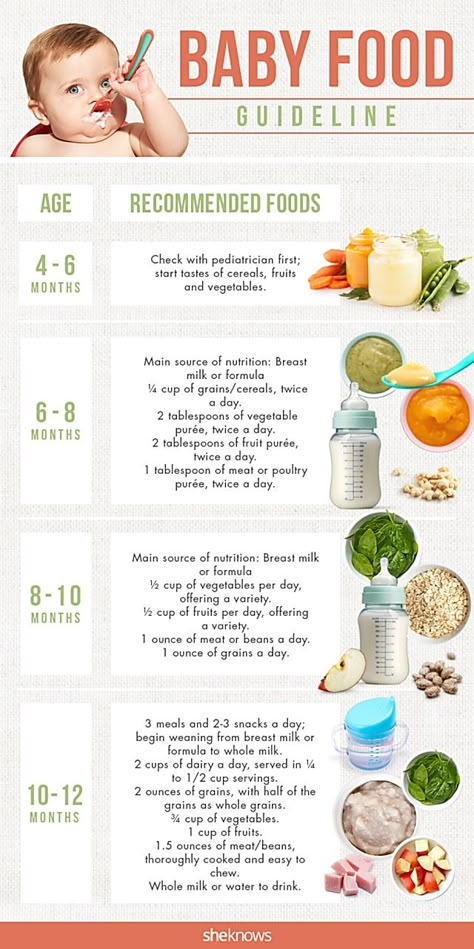
In terms of when you should offer your baby their meals, it's really up to you! For us, mornings are hectic, not to mention baby drank a lot of milk upon waking, so we started with lunch, then dinner, and added breakfast last.
Even though we are mainly talking about food, let's not forget that sleep is a very important piece to all of this. A well-rested baby means a happier baby who will be more interested in exploring the world of food.
I'm sharing our schedule to give you an idea of how to fit in two meals along with milk and nap times. You will notice this pattern - eat, play, sleep.
- 7 am - wake up and milk
- 9-10:15 am - Nap 1
- 10:20 am - Milk
- 11 am - Meal #1
- 12:30-1:30pm - Nap 2
- 1:35 pm - Milk
- 3:30-4:30 pm - Nap 3
- 4:35 pm - Milk
- 6 pm - Meal #2
- 6:30 pm - Milk
- 7 pm - bedtime
How to Cook the Softest Scrambled Eggs for Baby
What does a well-balanced plate look like in practice? With so many food choices, serving meals that will help meet your child’s nutrient needs can feel overwhelming. Please allow me to simplify and make this goal achievable and fun.
Please allow me to simplify and make this goal achievable and fun.
- Offer one high-iron food at each meal
- Offer one high-energy food at each meal
- Fruits/vegetables
I want to elaborate a little bit on high-energy foods. Think carbohydrates and fats. Some examples include nuts and seeds, avocado, full fat yogurt, grains, bread, etc.
Fat is an essential nutrient at this age for optimal brain development and growth. And these calorically dense foods are a great way to make every bite count.
You’ll notice that some of the foods overlap. For instance, avocado is a fruit but it’s also a high-energy food or beans are a good source of iron but also a vegetable. Simply decide which category you want the food to count as and fill in the rest.
In terms of the amount, start with small portions to make it less overwhelming for your baby. This will also reduce food waste. You can always offer more if they seem interested.
Real Life Examples
Here are some meals I served to my baby.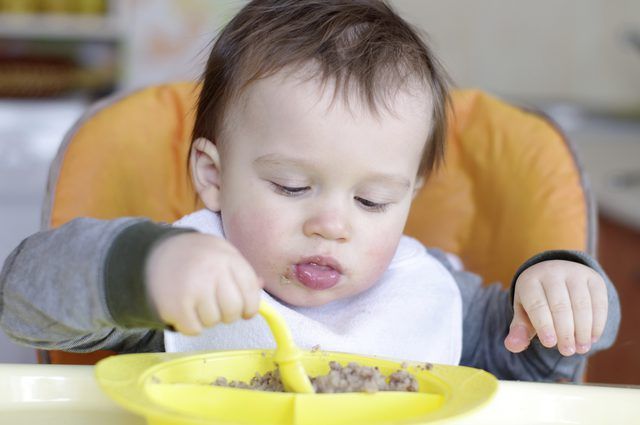
- Tofu Veggie Scramble Oatmeal Balls
- Iron food - tofu, beans
- High-energy food - oatmeal
- Vegetables - bell peppers, zucchini, onion
- Quinoa (iron) with avocado (high-energy), purple cauliflower (vegetable)
- Beef Stroganoff
- Iron food - beef
- High-energy food - pasta
- Vegetables - carrots, bell peppers, mushrooms, peas
- Turkey beet meatballs (iron), Avocado rolled in flax seeds (high-energy), Broccoli (vegetable)
Regardless of which feeding method you chose, the goal is that by 9 months, at the latest, your baby is being introduced to a wide variety of flavors and textures from all food groups.
That's because research shows that infants who are introduced to textures by 9 months generally have less feeding problems and greater food acceptance down the road.
If you’ve been spoon feeding, start by preloading the spoon and allowing them to pick it up themselves. There may be great resistance at first, and your baby may want you to continue feeding them. But stand strong.
There may be great resistance at first, and your baby may want you to continue feeding them. But stand strong.
Your baby will eventually realize that mommy or daddy won’t feed them no matter what and begin to explore for themselves.
Also, it’s completely normal for your baby to start eating less during this transition. Managing textured foods is a whole new experience, and your baby will need some extra time to learn the skills to handle them.
And they will when given plenty of opportunities to do so. Therefore, don’t fall back on purees. Keep marching forward. In the meantime, you can increase the amount of milk feeds.
For more tips, here's an in-depth post on how to transition from purees to table foods.
Best Baby Foods for 8-9 Months
By this age, your baby is working on developing their pincer grasp, which involves using the thumb and the index finger to pick up small pieces of food. You can start serving bite-sized pieces to help practice this new skill.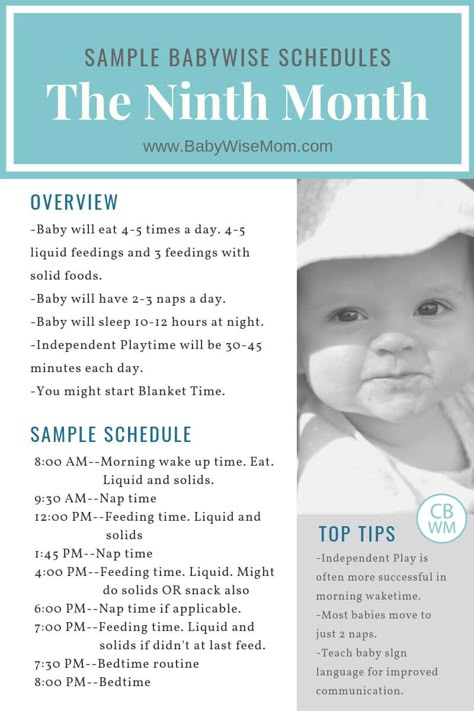
But do continue offering big pieces of food to minimize frustration and to allow for practice with taking bites.
Iron-rich foods
I've dedicated a whole post to this along with recipes! I believe you will find it extremely helpful.
Best iron-rich foods for babies
High-energy foods
- Avocado
- Oatmeal
- Nuts and Seeds
- Lentils
- Quinoa
- Yogurt
- Bread
- Pasta
- Muffins
- Dips/Sauces
- Waffles
- Pancakes
Best Weight Gain Foods for Babies
Fruits and Vegetables
- Butternut squash
- Sweet potatoes
- Beetroot
- Cauliflower
- Broccoli
- Bell peppers
- Mashed peas
- Zucchini
- Carrots
- Cabbage
- Mushrooms
- Parsnip
- Mango
- Apple
- Pear
- Banana
- Kiwi
- Berries (strawberries, raspberries, blueberries), smashed)
- Watermelon
- Peaches
When cooking vegetables, don't forget to season with herbs and spices!
Tips for Helping your Baby Eat
- Offer meals when your baby is happy and seems interested in eating.
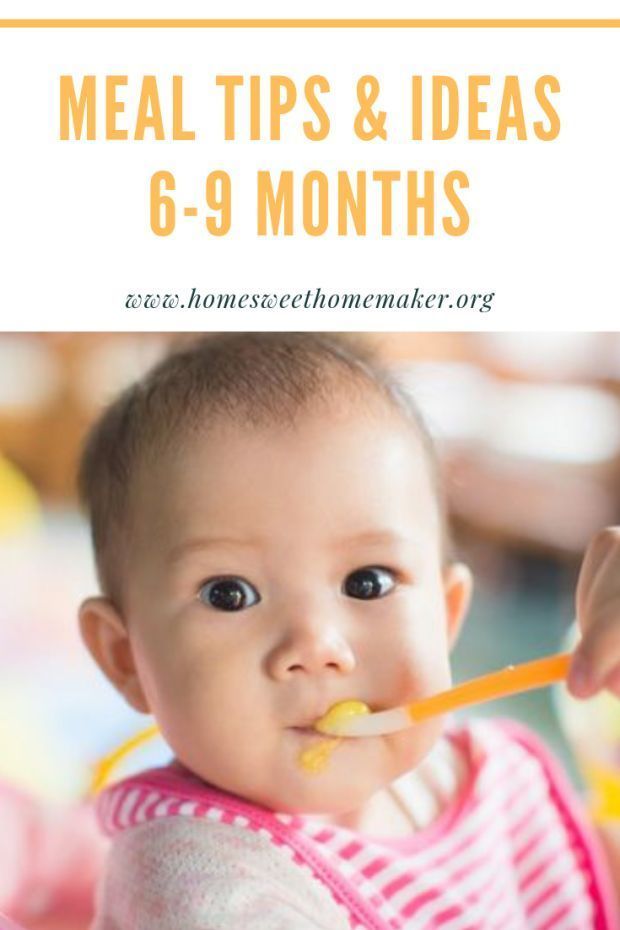
- Make sure foods are soft and easy to smash with your fingers.
- While their hands will be their best tools for quite some time, offer utensils from the beginning for exposure and familiarity.
- Don’t be afraid to season the food with a wide variety of herbs and spices. It’s such a delicious and easy way to expose them to all the different flavors. Hold off on salt!
- For foods that are harder to pick up, like rice and quinoa, mash with some sweet potato or avocado to make them easier to eat.
- Your baby may still be doing a lot of playing and throwing at this point, and that’s ok. They are still learning to self feed and it’s a skill that takes A LOT of practice. So be consistent and patient. Stick to your mealtime schedule and eat alongside your baby so they can watch and learn from you.
- If your baby doesn’t eat much during mealtime, you can offer a little bit of breastmilk/formula afterwards.
What to do when baby doesn't eat
What Foods to Avoid
- Hard or crunchy texture - raw fruits and vegetables, whole nuts, crackers, popcorn, etc.

- Sticky texture - a glob of peanut or nut butter
- Honey until 1 year as it can lead to botulism - it’s unsafe even if it’s uncooked. Be sure to read the labels as it’s an ingredient in a lot of unexpected foods.
- Unpasteurized milk, yogurt, cheese, or juice (which should be avoid until 2)
- Milk for drinking (can be used in recipes)
- High-sodium foods
- Added sugars
Favorite Feeding Tools
Here are the essentials that I know will save you time and your sanity! I know it’s tempting to buy all the adorable products that are out there. But truly, these are really all you need!
Additional Resource
If you are struggling to move beyond purees or feeling overwhelmed trying to give your baby the best, here's a complete roadmap that would show you through daily videos and photos of what foods and how to serve them to your baby AND the rest of the family at the same time!
Best food for 8 month old baby (and 9 to 10 month olds)
Learn about the best food for an 8 month old baby, including both puree and finger food ideas!
Note: this post contains affiliate links. As an Amazon Associate, I earn from qualifying purchases.
As an Amazon Associate, I earn from qualifying purchases.
What should eight-month-old babies eat?
Chances are if you’re a parent, you’ve spent a good bit of time with the Google search bar.
‘How much tummy time should I give my baby?’
‘Is she getting enough breast milk?’
And, of course, the desperate 2 a.m. search ‘when will my baby sleep through the night?’
Each transition brings new questions, new challenges, and new opportunities for your baby to grow and thrive. (And spoiler alert: Google has no idea when your baby will sleep through the night.)
By about 6 months of age, most babies are ready for another big transition: starting solid foods. But this milestone leaves most parents feeling hesitant and nervous.
‘Do I start with finger foods? Purees? When do I introduce allergenic foods?’
‘What are healthy foods for babies?’
‘How often should I introduce a new food to my baby?’
As is true with every choice in parenting, there isn’t just one right way. Recommendations have shifted away from reliance on rice-based infant cereals in favor of a diet that includes a variety of foods. But it can be tough to figure out exactly where to start and how to proceed as your child gets older and has greater nutritional needs. My goal as a Registered Dietitian is to simplify the process and give you some helpful tools and suggestions to guide you and your new eater along the journey.
Recommendations have shifted away from reliance on rice-based infant cereals in favor of a diet that includes a variety of foods. But it can be tough to figure out exactly where to start and how to proceed as your child gets older and has greater nutritional needs. My goal as a Registered Dietitian is to simplify the process and give you some helpful tools and suggestions to guide you and your new eater along the journey.
Your 8-month-old to 10-month-old’s development
Babies at 6, 7, and 8 months old will have more success with large pieces off food, around the size of 1-2 adult fingers. Your baby can grasp a soft, large piece of food and bring it to their mouth themselves.
Here is a steamed white potato wedge, with olive oil and a bit of pesto.
If you’re new to feeding baby, get Simply Solids: A quick guide to starting solids – it’s now FREE!
After a couple months of very messy practice, your 8-month-old baby will be gaining and refining their self-feeding, chewing, and swallowing skills.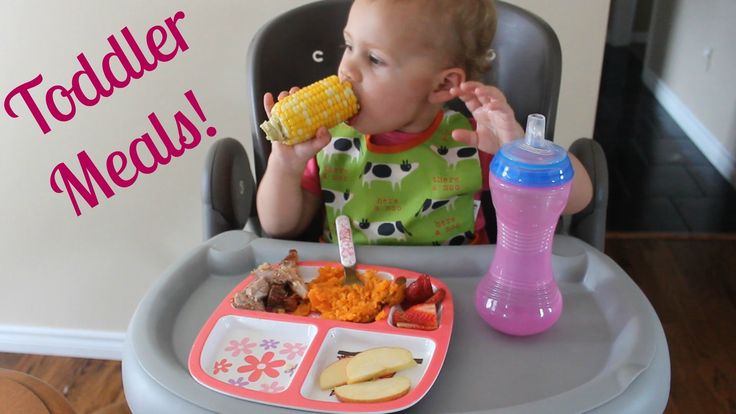
Best foods for 8 month old baby
Until now, you’ve probably been offering mostly soft foods and purees. You might be comfortable serving foods like mashed sweet potatoes and avocado, or even slightly more textured foods like cottage cheese and oatmeal. You might be exclusively serving pureed foods. Or you might have taken a baby-led weaning approach..
Either way, you’re past the stage of first foods and are moving on to a wider variety of options. Your 8 to 10-month-old will generally be able to tolerate foods in slightly different shapes and textures than your 6-month-old could.
The 8 month mark may begin the transition to baby being able to more easily pick up smaller pieces. The pincer grasp generally develops around the 9-month mark and will get more refined as your baby practices with food, toys, and other objects. It may happen a little before 9 months, or a bit after. Every baby is different!
Once the pincer grasp develops, babies in this stage generally do well with foods cut into small-bite sized pieces and shredded foods.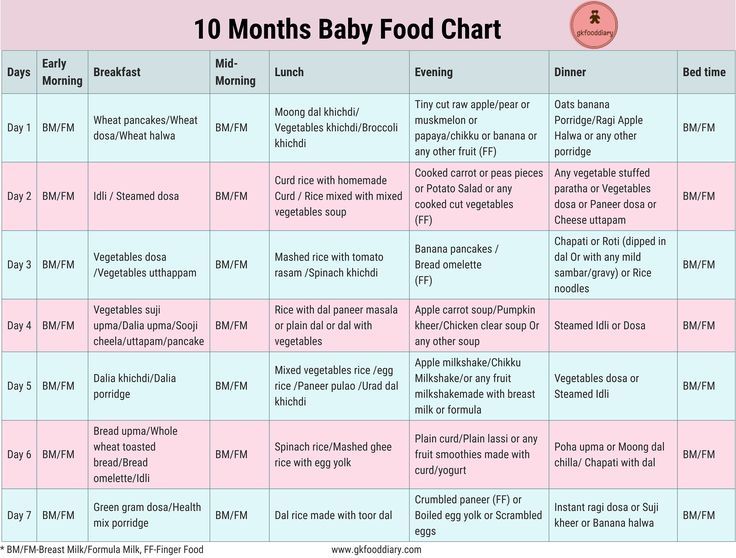 It’s still extremely important to be aware of common choking hazards like whole grapes, whole hot dogs, whole nuts, and anything else hard, very crunchy, or sticky.
It’s still extremely important to be aware of common choking hazards like whole grapes, whole hot dogs, whole nuts, and anything else hard, very crunchy, or sticky.
Even without teeth, your baby has strong gums and can mash soft foods well. It really is okay for them to move past purees!
They cannot grind harder foods, like nuts, without their molars. But they have the ability to mash any food that you can easily mash with your thumb and index finger, or your tongue and the roof of your mouth.
Frequency and Quantity
At 9 months, your baby should be eating 3 meals a day. Babies at this age are still getting a substantial amount of their nutrients through formula and/or breastmilk, but they may begin to drop feeds as they become more adept eaters. Additionally, baby’s intake at any given meal may vary, so don’t worry if your baby seems to eat more at one time and less at another. They are remarkably good at getting the nutrients they need when they are offered a variety of safe, healthy foods in addition to the recommended amount of formula/breastmilk.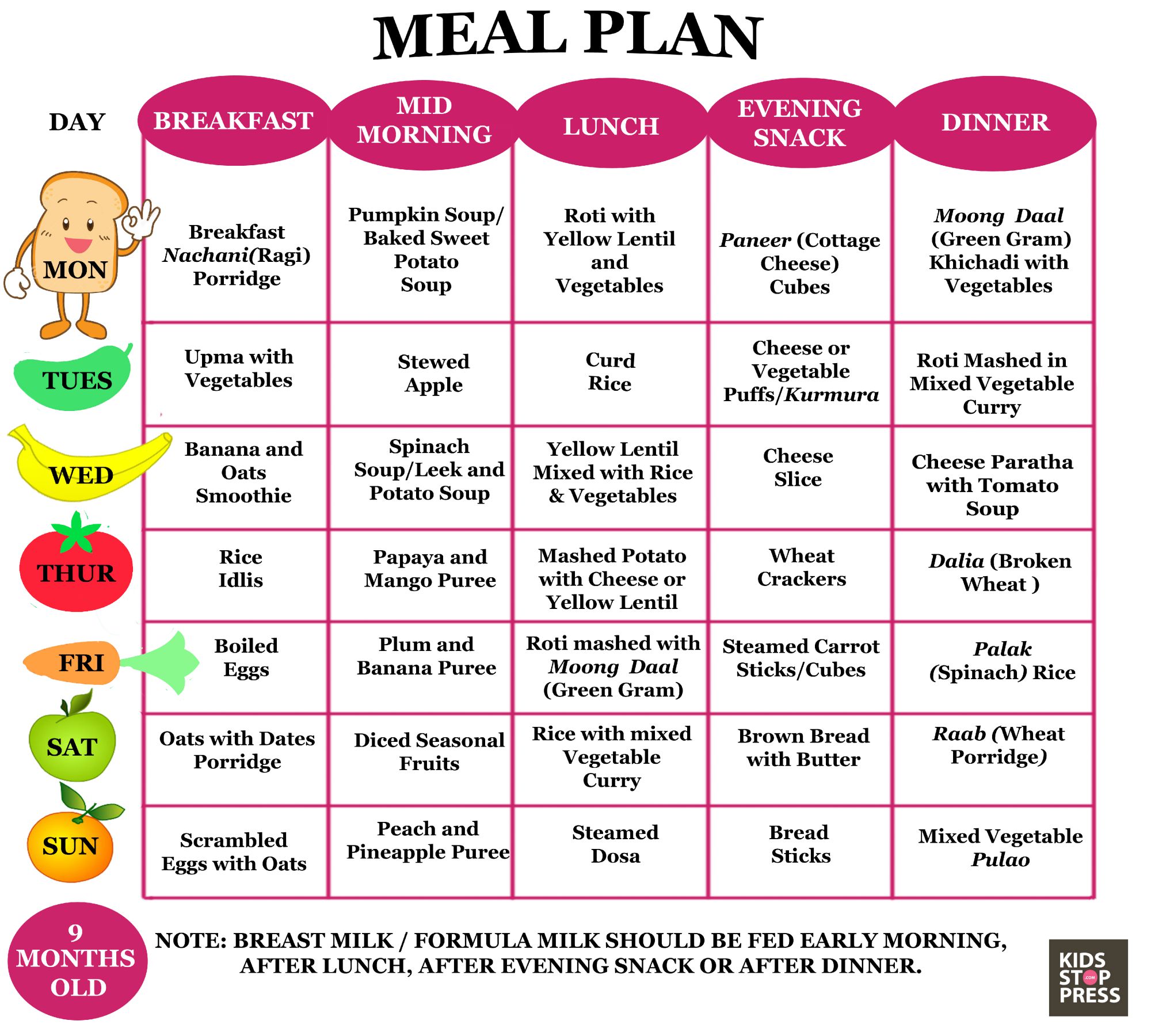
Start with small portions and allow them to have more if they are still acting hungry. 1 tablespoon of each food is a good place to start.
Should I feed them before their bottle or after?
Make note of baby’s hunger cues and interest in food. Aim to feed them anywhere from 30-90 minutes after a formula/breastmilk feed so that they are not too frustrated and hungry to self-feed when offered solids.
A Note on Allergens
If you haven’t already, I encourage you to introduce the common allergens (milk, soy, egg, wheat, peanut, tree nut, fish, and shellfish) into your baby’s diet. The repetitive introduction of allergens early and often can be preventative against the development of food allergies.
If your baby has a history of severe eczema or an already documented food allergy, be sure to discuss allergen introduction with your pediatrician or allergist, as they may have specific guidelines for you. And while allergic reactions are rare, it is good to be on the lookout for any sort of changes in your baby after the introduction of an allergen.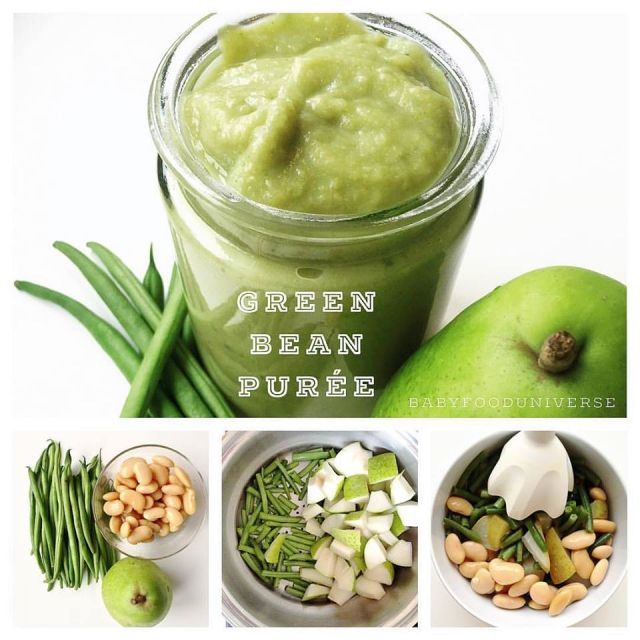 Mild allergic reaction symptoms may include a few hives around the mouth or diarrhea, and more severe reactions may include widespread hives, vomiting, difficulty breathing, lip/face/tongue swelling, or change in skin color or demeanor. If you observe any of the mild reactions in your baby, stop serving the suspected allergen and contact your pediatrician. If you observe any of the severe signs in your baby, please call 911 or go to the Emergency Department immediately.
Mild allergic reaction symptoms may include a few hives around the mouth or diarrhea, and more severe reactions may include widespread hives, vomiting, difficulty breathing, lip/face/tongue swelling, or change in skin color or demeanor. If you observe any of the mild reactions in your baby, stop serving the suspected allergen and contact your pediatrician. If you observe any of the severe signs in your baby, please call 911 or go to the Emergency Department immediately.
To learn more about how to introduce allergenic foods to your baby, read Introducing Allergenic Foods to Your Baby. Another helpful tool if you feel overwhelmed by trying to serve all of those common allergens is to use Spoonful One, daily mix-ins developed by a pediatric allergist.
Quick Tips for Feeding Your 8 month old, 9 month old, or 10 month old
Have your baby eat when you eat
Modeling eating for them is a very helpful practice in babies learning how to self-feed a variety of foods. If you are spoon-feeding your baby, now is a great time to offer them pre-loaded spoons to grab and self feed.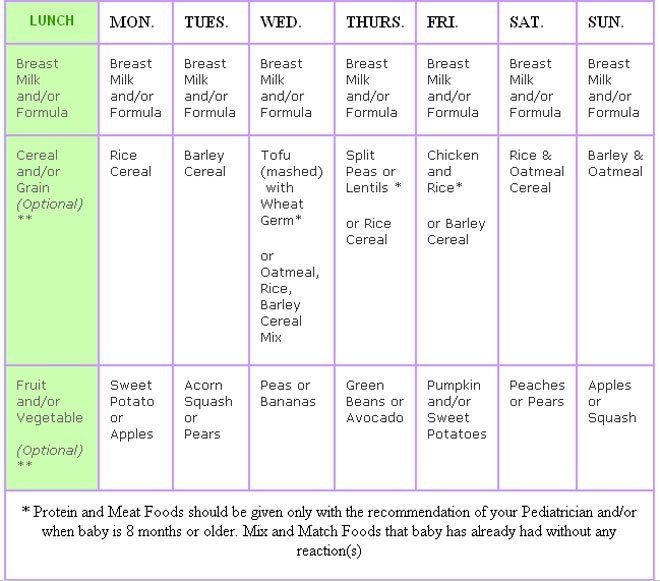 Safely prepared finger foods will also give them practice self-feeding. Or, feed them intermittently as you take bites of your own food. Babies take cues from our behavior, so this modeling approach helps them solidify their eating skills.
Safely prepared finger foods will also give them practice self-feeding. Or, feed them intermittently as you take bites of your own food. Babies take cues from our behavior, so this modeling approach helps them solidify their eating skills.
Prioritize foods with fat and iron
Fats should be unrestricted in the first 2 years of life. Include nutritious fat sources in your baby’s diet such as olive oil, avocado, and nut butter. Iron is also important for your 8-10-month-old-baby, as their reliance on iron stores from their time in utero have run out. Some iron-rich options for your baby’s diet include meat, egg yolk, salmon, beans, and lentils.
Limit baby’s intake of sodium for the first year
Feel free to season your baby’s food with herbs and spices, but hold the salt until after their first birthday and opt for items that are low in sodium when possible. Some foods will have sodium, like store bought bread. You do not need to avoid this completely. Aim to keep sodium to less than 300 to 400 mg per day for baby.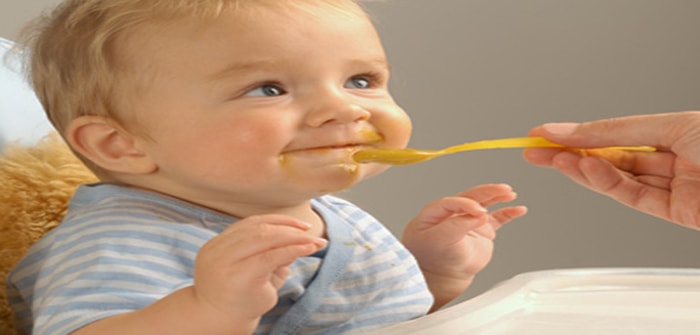 When cooking, remove baby’s portion before adding salt for the rest of the family.
When cooking, remove baby’s portion before adding salt for the rest of the family.
Avoid honey and added sugar
Honey can be contaminated with spores of a harmful bacteria that can multiply and cause infant botulism, so avoid all honey in foods- even if it is cooked. It is also recommended to limit added sugar for the first two years of life so that your child maximizes their consumption of nutrient-dense foods. The introduction of sugary snacks and foods can displace nutrient-dense foods in the diet and create a preference for those foods with less nutritional value. For more info on reducing added sugar and recipes that are for baby/toddler, check out No Sugar, Still Sweet.
Use pouches, puffs, and teethers strategically
These foods are fine to introduce and offer, but be strategic about your use of them. Pouches are great for on-the-go, or for when you need another caregiver to feed your child. But relying too heavily on pouches can hinder their oral motor skill development and perpetuate picky eating.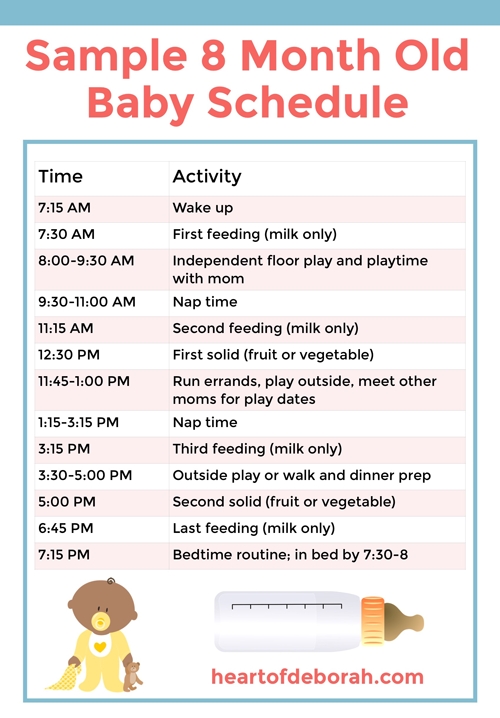 I like to use them for convenience and limit them to 1 per day. Items like puffs, melties, and teething biscuits typically don’t contribute much nutritionally, but can still be useful dietary aids. Teething biscuits might be used as a base for a spread, and puffs could be offered to keep your child occupied and working on that pincer grasp while you wait for your food at a restaurant. If you want nutrient-dense pouches and puffs, definitely check out Serenity Kids (use code MAMAKNOWS to get 15% off through that link).
I like to use them for convenience and limit them to 1 per day. Items like puffs, melties, and teething biscuits typically don’t contribute much nutritionally, but can still be useful dietary aids. Teething biscuits might be used as a base for a spread, and puffs could be offered to keep your child occupied and working on that pincer grasp while you wait for your food at a restaurant. If you want nutrient-dense pouches and puffs, definitely check out Serenity Kids (use code MAMAKNOWS to get 15% off through that link).
Quit the rice cereal, if you haven’t already
Rice may contain levels of arsenic that are potentially unsafe for baby. Rice cereal is not a necessary food for baby so it’s best to ditch it, and products made from rice flour, for baby. Rice is okay, but limit to no more than 2 to 3 times per week, prioritizing rice grown in California for lower levels of arsenic.
It’s okay, but not necessary, to offer water
Baby gets enough fluid without extra water. They meet their hydration needs from formula or breastmilk, so there is no need for a baby of this age to drink a prescribed amount of water. However, offering water from an open cup or a straw cup can help refine oral motor skills that are useful for language development. And, sometimes it’s just nice to have a sip of water while eating! Offer 2 to 3 ounces in a cup. The ezpz tiny cup is amazing for practice learning to drink from an open cup. This cup is a good first straw cup to practice with. Here is a quick video tutorial to teach baby how to drink from a cup!
They meet their hydration needs from formula or breastmilk, so there is no need for a baby of this age to drink a prescribed amount of water. However, offering water from an open cup or a straw cup can help refine oral motor skills that are useful for language development. And, sometimes it’s just nice to have a sip of water while eating! Offer 2 to 3 ounces in a cup. The ezpz tiny cup is amazing for practice learning to drink from an open cup. This cup is a good first straw cup to practice with. Here is a quick video tutorial to teach baby how to drink from a cup!
Best food for 8 month old baby
Pre-loaded Spoons:
Use these ideas to load a spoon and put it in baby’s hand. Practice hand-over-hand first if they are having trouble bringing the spoon to their mouth. I love these spoons and these spoons for babies. Use 2 or even 3 spoons per feeding. Sometimes baby holds onto one in one hand while using the other to eat. And you can load up an extra spoon while baby is working on the other.
- Sweet potato- all kinds
- White, orange, purple! Mash and mix with breastmilk or nut milk to thin.
- Yogurt + mashed fruit
- Plain whole milk or full-fat coconut yogurt with no added sugar and mashed fruit; blackberries, kiwi, and banana work well.
- Avocado mash
- Mix with quinoa or whole wheat couscous, or combine with full-fat ricotta cheese for a more nutrient-dense option.
- Hummus or white bean dip
- If homemade, use olive oil, fresh spinach, garlic, and lemon and blend until smooth for a tasty spread with an added veggie boost,
- Nut butters
- Peanut, almond, cashew; thin with breastmilk, mix into yogurt, or stir into baby oatmeal.
- Cottage cheese
- Offer full-fat cottage cheese alongside avocado or tomato cut in wedges.
If you want healthy, nutritious, pre-made blends on hand, I absolutely love Little Spoon!
Pro-tip: when you visit Little Spoon, you can sort their blends flavors by Benefits. Select “brain” – those are my top choices for baby!
Select “brain” – those are my top choices for baby!
Finger foods:
- Acorn Squash
- Roast acorn squash in wedges with olive oil and seasonings
- Steamed broccoli
- Steam whole broccoli florets until soft, drizzle with olive oil and lemon juice
- Eggs
- The yolk is the most nutritious part, but serving the whole egg is great too! Serve as scrambled eggs or as an omelette cut into strips or bite sized pieces
- Beans and lentils
- Cook lentils until soft and offer beans flattened by hand or refried
- Banana
- Offer half a banana with nut butter spread thinly across it, sprinkle with ground flaxseed, chia seed, or hemp seeds for a nutritional boost
Finger food prep
Finger food preparation is important both for your baby’s safety and for their ability to successfully pick up and eat what’s offered. A good rule of thumb is to serve finger foods in wedges or spears about the width of one or two of your fingers.
If you are serving foods that can’t be made into those shapes, or baby has a good pincer grasp, make sure they are soft foods in bite size pieces. And if you want to serve hard fruits and vegetables like apples or broccoli, steam, saute, or roast them until they are soft enough to break apart between your fingers.
Laying a foundation
Your 8-10-month old is seemingly growing by the day and on the brink of even more major developmental milestones. They are becoming more and more independent, and eating is a new avenue through which they can explore and develop confidence in new skills. The skills they are learning now will serve them for the rest of their lives- not only how to pick up food, chew, and swallow, but also how to make decisions about what they eat, how to listen to their hunger and fullness cues, and how to ultimately be in tune with their own bodies.
So as you’re scrubbing the sweet potato off your curtains and wiping down the high chair for what feels like the millionth time this week, remember that you are laying the foundation for your baby’s healthy future by helping them develop some extremely important skills and tools that they’ll use long after they graduate from their high chairs.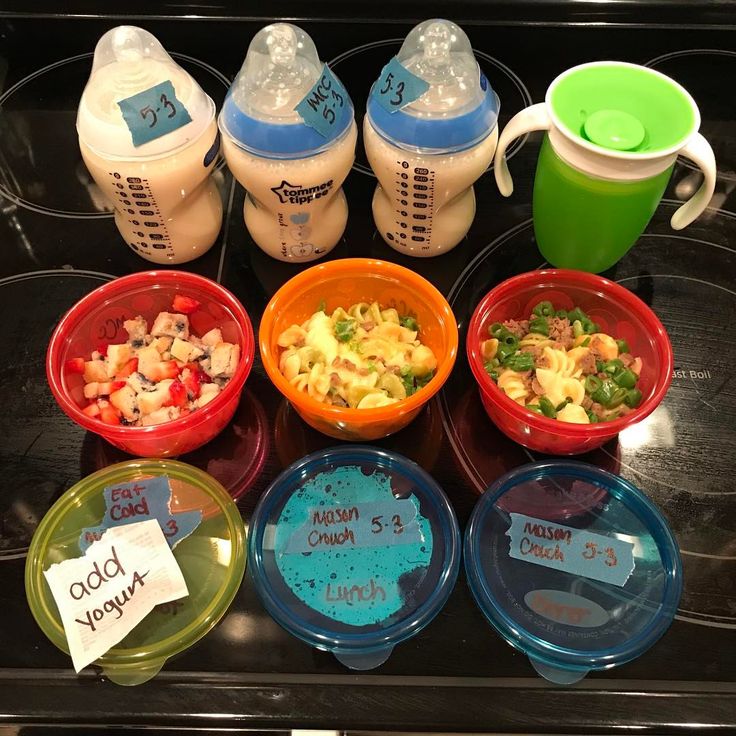
References
- Daniels L , Heath AL, Williams SM , et al. Baby-Led Introduction to SolidS (BLISS) study: a randomised controlled trial of a baby-led approach to complementary feeding. BMC Pediatr 2015;15:1–15.doi:10.1186/s12887-015-0491-8
- Caffarelli, C., Di Mauro, D., Mastrorilli, C., Bottau, P., Cipriani, F., & Ricci, G. (2018). Solid Food Introduction and the Development of Food Allergies. Nutrients, 10(11), 1790. DOI: 10.3390/nu10111790. Retrieved June 4, 2021.
- Strohm, D., Bechthold, A., Ellinger, S., Leschik-Bonnet, E., Stehle, P., Heseker, H., & German Nutrition Society (DGE) (2018). Revised Reference Values for the Intake of Sodium and Chloride. Annals of nutrition & metabolism, 72(1), 12–17.
Menu for a child at 8 months: what is possible, diet
PreviousNext
- What does a child eat at 8–9 months and what new foods should be introduced?
- What to give a baby at 8 months - what consistency should his food be?
- What diet should an eight-month-old baby have?
- What should you refrain from in feeding a child?
- Approximate menu for feeding a baby at 8 months
Contents:
The older the child gets, the more questions young parents have about feeding.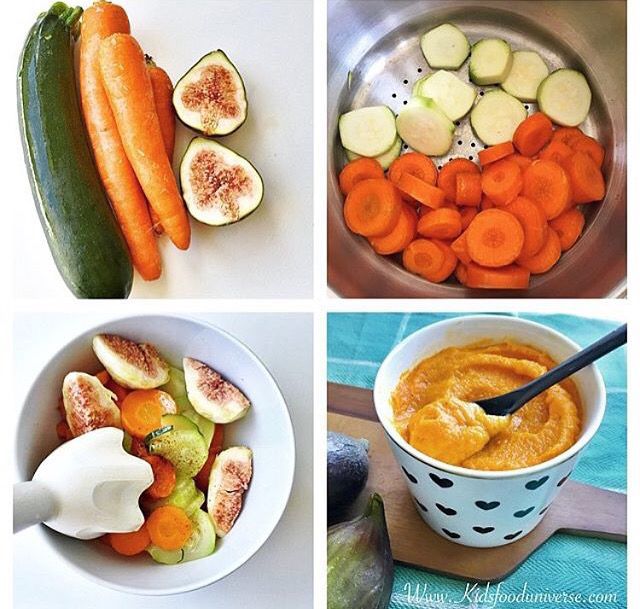 The introduction of products has already begun, but what's next? What does an 8 month old baby eat? What is impossible? What to feed the baby? What is the feeding schedule? How much does an 8 month old baby eat? And if he is breastfed or artificial?
The introduction of products has already begun, but what's next? What does an 8 month old baby eat? What is impossible? What to feed the baby? What is the feeding schedule? How much does an 8 month old baby eat? And if he is breastfed or artificial?
By this age, the baby should be receiving adequate complementary foods, but breast milk and its substitutes are still the mainstay of an eight-month-old baby's diet (World Health Organization, American Academy of Pediatrics). Recall that the purpose of the introduction of complementary foods is to introduce the child to foods and new textures, teach him to chew, replenish the supply of nutrients that is missing for a growing body and prepare for the transition to a common (parental) table. By the way, do you know what a baby should be able to do at 8 months? Look in this article.
At 8-9 months, in addition to nutrients from breast milk or milk equivalents, a baby needs approximately 400 kcal, 6 grams of protein, 200 mg of calcium, 3. 5 mg of iron, as well as fats, carbohydrates, and a range of vitamins and minerals daily, which should be supplied with complementary foods.
5 mg of iron, as well as fats, carbohydrates, and a range of vitamins and minerals daily, which should be supplied with complementary foods.
What does a baby eat at 8–9 months and what new foods should be introduced?
By the age of eight months, the baby already has a sufficient set of complementary foods: various vegetables (zucchini, broccoli, cauliflower, potatoes, pumpkin, carrots, sweet potatoes), fruits (apple, pear, banana, peach, apricot), cereals (buckwheat, rice, corn), meat (turkey, rabbit, beef, chicken), butter and vegetable oils.
Baby nutrition experts recommend that fish be introduced to complementary foods at this age as a source of omega-3 fatty acids, B vitamins, minerals and trace elements. You should start with white fish (hake, cod, perch, pollock). Serving size should not exceed 30-50 grams per serving, 1-2 times a week instead of meat dishes. Fish can be combined with vegetables or cereals.
8 months is the time to start introducing fermented milk products (kefir, unsweetened biolact or yogurt up to 150 ml per day), cottage cheese (no more than 50 grams per day) and cheese into the diet. An additional source of calcium is extremely important for a fast-growing organism. In addition, lactic acid bacteria help the baby's digestion.
An additional source of calcium is extremely important for a fast-growing organism. In addition, lactic acid bacteria help the baby's digestion.
Parents often have a question: is it possible to give milk to a child of 8 months? No, WHO does not recommend doing this before 12 months due to the high risk of developing an allergic reaction.
As an additional source of fat, it is recommended to add 1 tsp. butter in cereals and 1 tsp. vegetable oil in vegetable dishes.
What to give a baby at 8 months - what consistency should his food be?
The consistency of food for an eight-month-old baby should be soft, but not homogenized - mashed potatoes, minced meat, ground on a grater. From 8 months it is recommended to introduce pieces into complementary foods: you should start with small ones, no more than 0.5 × 0.5 cm of soft consistency (for example, boiled zucchini, banana, ripe pear, etc.).
In addition to the food that the baby receives from a spoon, it is important to offer him the so-called finger food - food that the child will independently hold in his hand and eat. For example, fresh fruits cut into large pieces (banana, peach, melon) or cooked vegetables (potatoes, carrots, bell peppers). Eating on your own while holding the product in your hand is an important skill that a child must acquire at the stage of acquaintance with food. So the child will learn to bite off small pieces, chew and swallow them. In addition, it is great for training coordination and fine motor skills, and learning the texture of the product is an important part of development.
For example, fresh fruits cut into large pieces (banana, peach, melon) or cooked vegetables (potatoes, carrots, bell peppers). Eating on your own while holding the product in your hand is an important skill that a child must acquire at the stage of acquaintance with food. So the child will learn to bite off small pieces, chew and swallow them. In addition, it is great for training coordination and fine motor skills, and learning the texture of the product is an important part of development.
What diet should an eight-month-old baby have?
At 8 months, the baby should have approximately 2-3 full meals and 2-3 snacks, while breastfeeding may still be on demand.
And there are no fundamental differences between cooked food at home and in industrial conditions. Use the one that is comfortable for you.
Experts disagree about how much a baby eats at 8 months. Experts from WHO and the Union of Pediatricians of Russia recommend increasing the volume of complementary foods to 180-200 ml per feeding.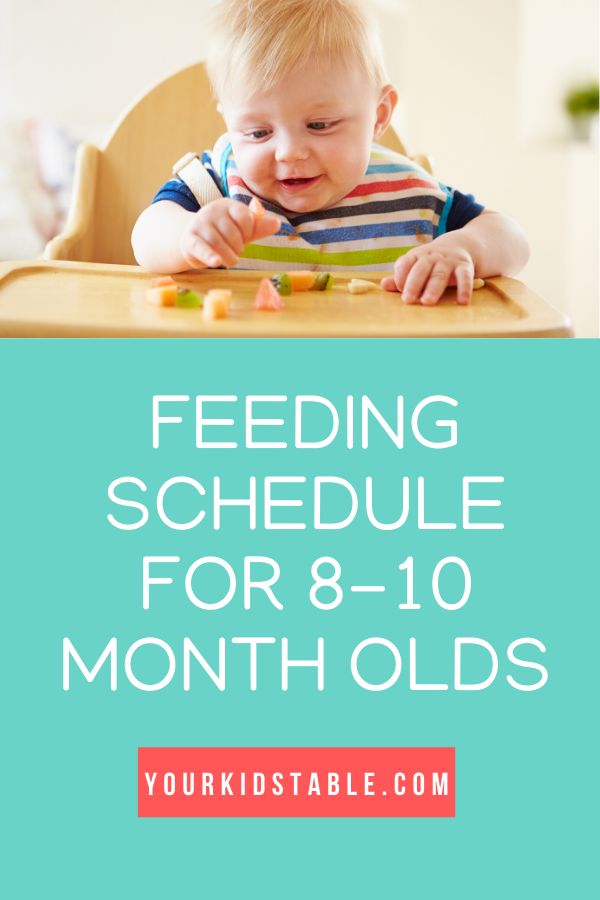 However, if parents plan to continue breastfeeding, such large serving sizes may crowd out feedings, so the volume of a single serving should not exceed 120 ml.
However, if parents plan to continue breastfeeding, such large serving sizes may crowd out feedings, so the volume of a single serving should not exceed 120 ml.
What should one refrain from in feeding a child?
For a long time, fruit juice was used as the first complementary food. However, now pediatricians around the world recommend including these drinks in the baby’s diet no earlier than a year. A large amount of sugars (even natural ones) has a negative effect on the immature gastrointestinal tract of the baby, and especially on the liver and pancreas. Therefore, it is worth waiting 12 months.
Also, currently fashionable cow's milk substitutes - oatmeal, coconut, almond, buckwheat and others are of no use. Such products have a low energy value, and they only take up additional volume in the stomach.
Tea, even for children, even herbal, should also not be introduced into complementary foods at 8 months. WHO experts recommend introducing your baby to this wonderful drink no earlier than 5 (!) years.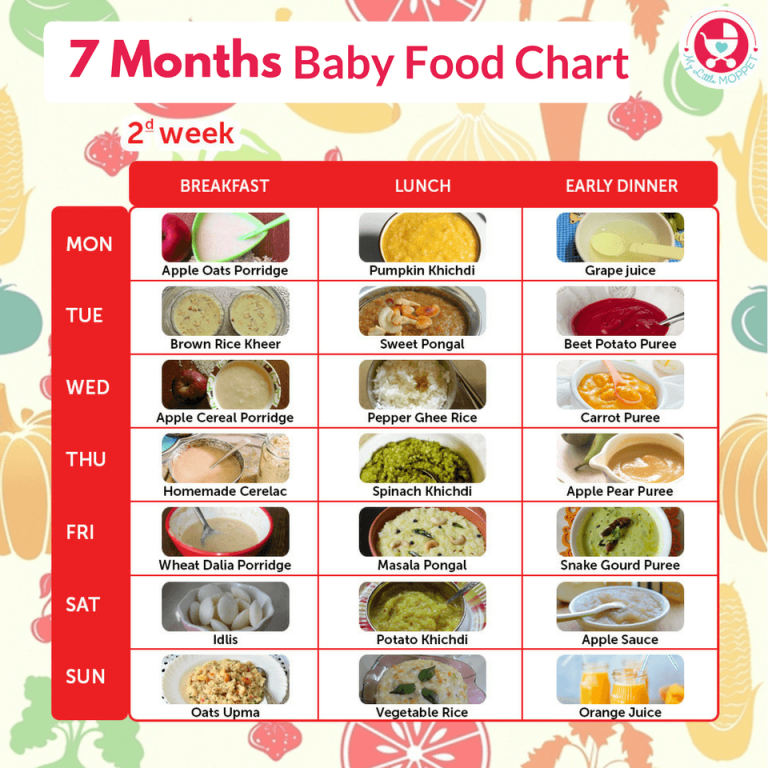
And, of course, in recipes for an 8-month-old baby, you should refrain from refined sugar (including baby biscuits), honey (risk of botulism infection), mushrooms, fatty fish and meat, sausages and sausages.
Approximate feeding menu for an 8 month old baby
In addition to breast milk or its substitutes, the diet of an 8-month-old baby is as follows.
Sources:
- https://www.pediatr-russia.ru/parents_information/soveti-roditelyam/ratsiony-pitaniya-v-razlichnye-vozrastnye-periody/vvedenie-prikorma.php
- https://www.unicef.org/parenting/food-nutrition/feeding-your-baby-6-12-months#:~:text=Start%20to%20give%20your%20baby,nutrients%20she%20needs%20without %20breastmilk
- https://open.alberta.ca/dataset/efb0a54d-5dfc-43a8-a2c0-f3a96253d17e/resource/f297828a-45c4-4231-b42c-48f4927a90d8/download/infantfeedingguide.pdf
- https://www.healthyparentshealthychildren.
 ca/im-a-parent/older-babies-6-12-months/feeding-starting-solid-foods
ca/im-a-parent/older-babies-6-12-months/feeding-starting-solid-foods
| Author: pediatrician Karina Petrova |
Diet for an 8 month old child
In the ninth month, fish can be introduced into the diet of children. Along with animal meat, fish is a source of complete protein with a well-balanced composition of amino acids, fat, vitamins B2, B12 and minerals. Compared to meat, fish contains 5 times less connective tissue, due to which it is quickly boiled soft, has a delicate texture after heat treatment and is easier to digest. Fish oil is characterized by a high content of polyunsaturated fatty acids, including the ω-3 class. These substances are necessary for the child to mature the brain, retina, strengthen the cardiovascular and immune systems. Sea fish contains such important trace elements for the child's body as iodine and fluorine. The child should be given 1-2 times a week instead of meat, be sure to monitor how the child tolerates fish in general and its individual varieties. Preference should be given to oceanic fish, preferably white (cod, hake, pollock), red salmon can be recommended, river pike perch, carp.
The child should be given 1-2 times a week instead of meat, be sure to monitor how the child tolerates fish in general and its individual varieties. Preference should be given to oceanic fish, preferably white (cod, hake, pollock), red salmon can be recommended, river pike perch, carp.
Self-cooked fish is given to a child with boiled and mashed vegetables. You can also offer your baby fish and vegetable canned food, but they contain only 10 - 20% of fish.
At this age, when all the main food groups have already been introduced, special attention should be paid to the diversity of the composition of dishes. New, possibly combined products are introduced, for example, not only purees from various fruits and berries, but also their combinations with cottage cheese, cream, cereals, etc.
From the age of 8 months, the child's diet can be expanded to include fermented milk products (baby kefir, biokefir, bifidokefir, yogurt, bioyogurt, biolact). Fermented milk products are prepared using a special starter culture that breaks down milk protein, so that the baby can get an indispensable set of amino acids in a well-available form.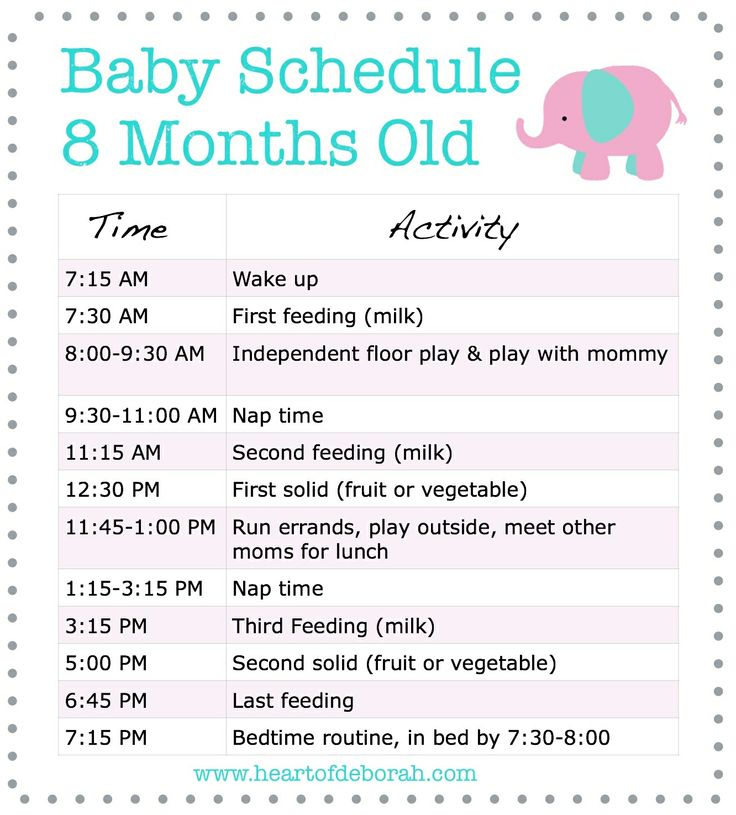 Fermented milk products improve the composition of the intestinal microflora of the child, are rich in B vitamins and calcium. Their regular use favorably affects the functioning of the intestines, stimulates appetite, and increases the absorption of micronutrients. Children's dairy products are introduced into the baby's diet gradually, starting with 1 tsp. and with good tolerance increase their volume to 150-200 ml per day.
Fermented milk products improve the composition of the intestinal microflora of the child, are rich in B vitamins and calcium. Their regular use favorably affects the functioning of the intestines, stimulates appetite, and increases the absorption of micronutrients. Children's dairy products are introduced into the baby's diet gradually, starting with 1 tsp. and with good tolerance increase their volume to 150-200 ml per day.
Sample menu for a healthy baby 8 months
| I feeding 6 hours | Breast milk or infant formula | 200 ml |
| II feeding 10 hours | Dairy-free* or milk porridge Butter Boiled egg yolk Fruit puree Fruit juice | 180 g |
| III feeding 2 pm | Vegetable puree Vegetable oil Meat puree Fruit juice | 170 g 1/2 tsp 50 g 50 ml |
| IV feeding 18 hours | Cottage cheese Baby biscuits Fruit puree Supplementation with breast milk or baby kefir/yogurt | 40 g |

